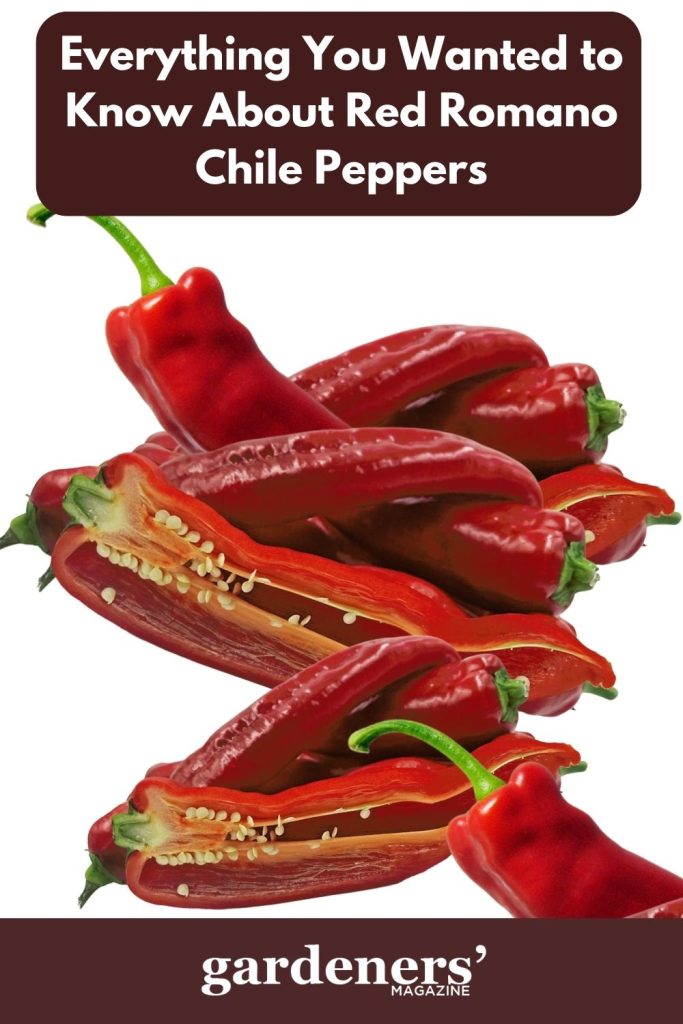Red Romano Chile peppers (Capsicum annuum) are a versatile and mild pepper that adds flavor and heat to any dish. They’re easy to grow in your backyard or in containers, have an earthy aroma, and come with a wide array of health benefits. Whether you’re looking for a new ingredient to add to your favorite recipes or want to give your garden some extra color, Red Romano Chile peppers are a great choice.
History and Origin of Red Romano Chile Peppers
Red Romano Chile peppers, also known as chili guero or yellow hot chili, hails from Mexico, Central America, and the Caribbean. The pepper’s name is derived from their elongated shape that resembles the classic Roman column. This variety of peppers is most commonly grown in warmer climates, with the majority of their cultivation taking place in Mexico and Peru.

Flavor Profile of Red Romano Chile Peppers
Red Romano Chile peppers have a mild heat level and bright flavor that is slightly sweet. The pepper has a crisp texture when raw, but becomes softer and more intense as it cooks. In addition to their versatility in dishes, these peppers also make for excellent pickles and can be dried or powdered for use in sauces and salsas.
Health Benefits of Red Romano Chile Peppers
Red Romano chile peppers are packed with nutrients that provide numerous health benefits. They are a good source of vitamins A, C, B6, and K, as well as dietary fiber, minerals like iron, potassium, magnesium, phosphorus and calcium.
Seasonality and Availability Throughout the Year of Red Romano Chile Peppers
Red Romano Chile peppers are available throughout most of the year. They’re usually at their peak from late spring through summer, but can be found year-round in specialty stores or through online retailers.
Cultivation and Harvesting of Red Romano Chile Peppers
Red Romano chile peppers require warm weather and sunny, dry conditions for optimal growth. The peppers are usually grown in small plots on hillsides using traditional farming techniques like hand-weeding and weeding with hoes. They are harvested by hand when fully ripened, usually in the early morning before the sun gets too hot.
Where Do Red Romano Chile Peppers Grow? Region-wise
Red Romano chile peppers are most commonly grown in warmer climates such as Mexico and Peru. They are also grown in other regions with similar weather conditions like India, Spain, Italy, and the United States.
What Are the Things to Remember When Buying Red Romano Chile Peppers?
When buying red Romano chile peppers, it’s important to look for ones that are firm and deep in color with no signs of wilting or mold. Avoid purchasing any peppers that have soft spots or bruises as these may be spoiled.
How to Store Red Romano Chile Peppers?
Red Romano chile peppers should be stored in the refrigerator, preferably in an airtight container, for up to five days. They can also be frozen for up to six months.
How Do You Use Red Romano Chile Peppers with Other Fruits and Vegetables?
Red Romano chile peppers can be used to add flavor and color to dishes. They go well with vegetables such as potatoes, squash, zucchini, and eggplant. They can also be added to fruits like apples or pears for a unique flavor combination. Red Romano chile peppers can also be roasted and blended into sauces or served fresh for a flavorful kick in salads, salsas, and many other dishes.
Conclusion
Red Romano chile peppers are a unique and flavorful variety of pepper that can bring an extra zip to your favorite dishes. They are easy to grow and store, and can easily be incorporated into meals as an added flavor boost. With their full-bodied flavor and unique color, red Romano chile peppers are a great addition to any kitchen. So next time you’re looking for something new in the produce aisle, be sure to pick up some red Romano chiles and get cooking .
- Everything You Wanted to Know About Red Tamarillos - June 2, 2025
- A Guide to Tulips: Everything You Need to Know & More… - June 2, 2025
- Guanabana: Description, Flavor, Benefits, And Uses - May 27, 2025

2 thoughts on “Everything You Wanted To Know About Red Romano Chile Peppers”
Comments are closed.